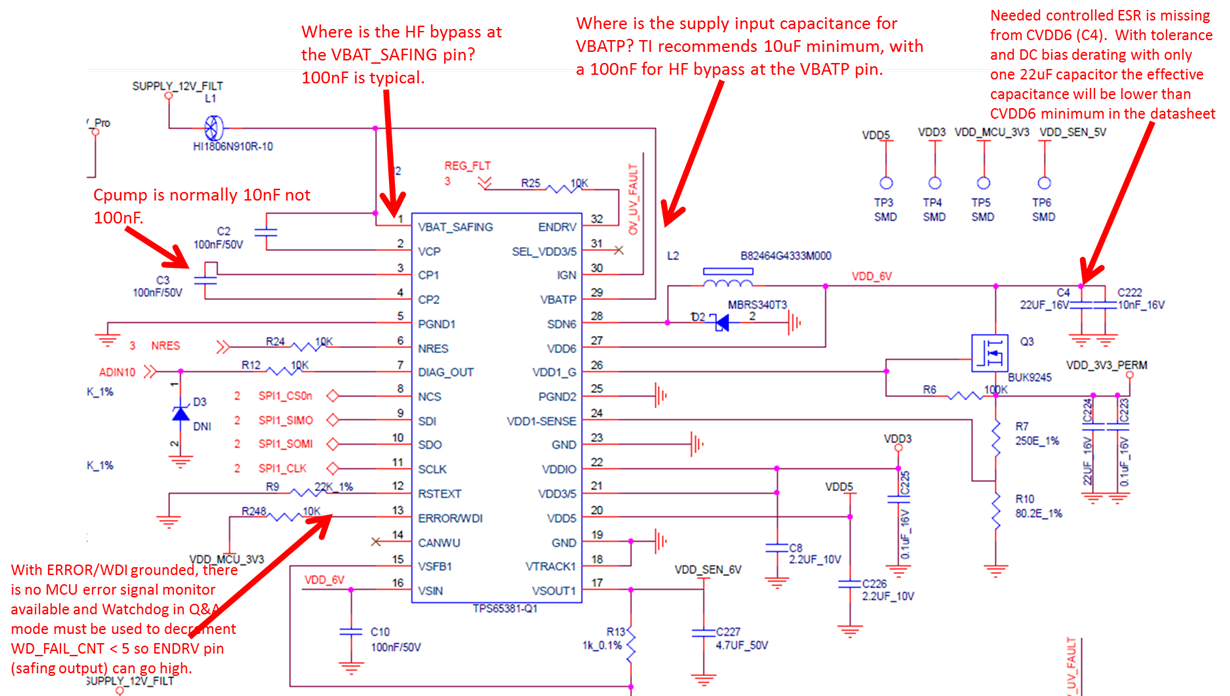Other Parts Discussed in Thread: TMS470MF06607,
Hi
I am working on TPS65381A-Q1 device and controller used is TMS470MF06607.
I am trying to read the TPS device state which is always showing that it is in Safe State and sometimes in Standby State.
I am trying to read error status too. 'WDG_FAIL' and 'ERR_PIN_FAIL' bits are getting set.
I tried being in the diagnostic state by setting 'DIAG_EXIT_MASK' bit and disabling 'DIAG_EXIT' bit but still the current device state is either Safe mode or Standby.
Even I tried reading back the 'DIAG_EXIT_MASK' and 'DIAG_EXIT' bit and showed both are set to '1'.
Please help me find out issue at the earliest so that I may enter 'Diagnostic State' and 'Active State' and carry out further task.
Regards
Mayank Bhatt


